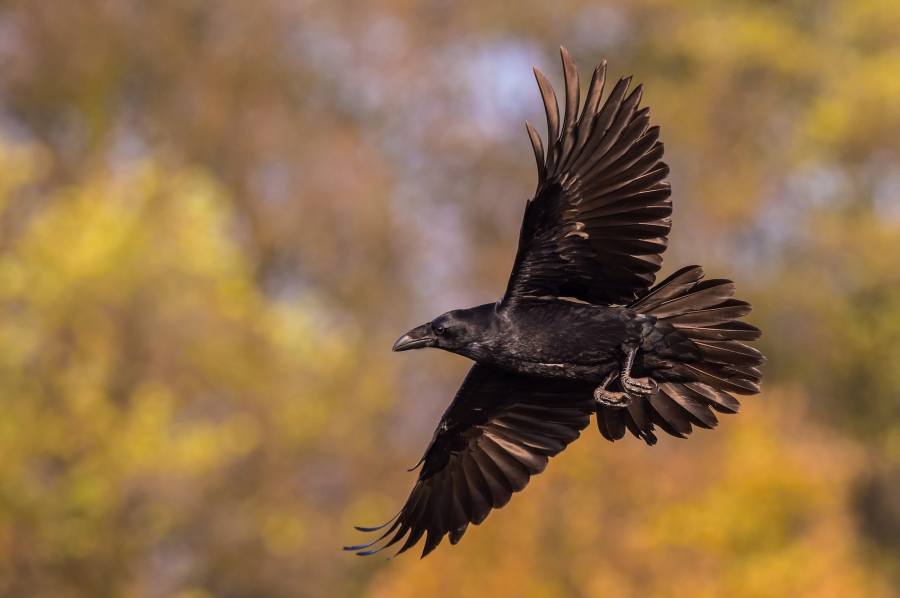Scottish Natural Heritage has issued a controversial licence for culling ravens in Perthshire. Leading conservation and environmental voices have condemned the plans
Update: The SNH have issued a statement in response to criticism of the scheme.
Scottish Natural Heritage (SNH), the conservation agency responsible for advising the Scottish government, has issued a licence authorising a widespread raven cull in an area of Perthshire. The licence permits 300 ravens to be killed as part of a large-scale trial over five years to see if wader populations can recover with reduced predation.
There’s no doubt that wading birds are experiencing a crisis. In the last decade, dunlin populations have declined by an estimated 52 per cent. Redshank, ringed plover, oystercatcher, curlew and others have all experienced sharp declines.
However, the licence has been issued to several estates in the Strathbraan area, including Glen Quaich Estate – an area where a satellite-tagged white-tailed eagle recently disappeared over grouse moorland. According to spokesperson at the RSPB, it’s the fourth satellite-tagged eagle to have disappeared in “highly suspicious” circumstances in this area since 2014.
After widespread condemnation by conservation and environmental campaigners, SNH has subsequently agreed to review its plans “as speedily as possible”. However, there is no evidence that the licence itself has been suspended while this review takes place.
The blog Raptor Persecution Scotland, one of the leading blogs covering wildlife crime, laid out three key concerns in a recent post:
- The location chosen for the trial is an area dominated by driven grouse shooting with a history of illegal raptor persecution;
- The scientific background and justification for this cull remain unproven at best;
- SNH do not appear to have communicated with the Scottish Raptor Study Group to discuss their plans, and the blog post claims that not all landowners have even been contacted about the licence.
Currently, there are two public petitions demanding an end to the plan:
- Stop the Mass Culling of 300 Ravens in Scotland now (29,839 signatures at the time of writing)
- Stop proposed Raven Cull by Scottish Natural Heritage (16,090 signatures at the time of writing)
“Ill judged and ruinous decision”
These concerns are shared by other campaigners and writers.
RSPB Scotland penned a formal response on 23 April, casting doubt on the motivations behind the project: “In light of previous loud complaints by estates in this and other grouse shooting areas about raven predation of red grouse, we and many others see this raven research proposal as simply a rather transparent mechanism whereby a perceived pest species can be removed to benefit red grouse, with the conservation of wading birds as a by-product.”
Conservationist and TV presenter Chris Packham sent an email to Mike Cantlay, Chair of Scottish Natural Heritage: “If you had asked a team of the very best PR executives to come up with a plan to incinerate the last vestiges of credibility, to banish any dwindling reserves of integrity and to destroy any remaining trust between conservationists and SNH, then it’s my bet that they would have suggested this. Top work.
“As it stands the already beleaguered reputation of SNH lies in bloodied tatters, and, whilst I am not a PR person I would suggest that to reverse this ill judged and ruinous decision – as quickly as possible – would be a jolly good idea.”
Chris Townsend, Gear Editor and writer for The Great Outdoors, as well as a vocal campaigner for wildlife and the environment, wrote a response on his blog: “There seems to me no justification for this slaughter. It’s noteworthy that SNH worked with gamekeepers, farmers and estates on this but no wildlife or bird organisations. Not the RSPB, or the Scottish Raptors Study Group, not the Scottish Wildlife Trust – no-one in fact who might have argued against the proposal.”
He points out that the raven has substantial cultural significance: “It was and is an important bird of mountains and wild places. It should remain so, unpersecuted.”
Balance
A spokesperson for Scottish Natural Heritage said: “We need to get a balance between species – bringing back waders from the brink, whilst still maintaining a healthy national population of ravens.
“Given concerns about the future for local ground nesting waders, the Strathbraan Community Collaboration for Waders (SCCW), approached us in 2017 with a request for a licence which would help us understand the decline of these important species. SNH considered this request, following due process and have granted the licence, attaching clear conditions for SCCW to follow.
“The information SCCW gather throughout the trial will contribute to the wider work for waders and will be made available to others who are also working to save these endangered birds to allow us all to learn and make progress in conserving some of our most threatened species.
“SNH is confident about the rationale behind this licence. However, in recognition of the concerns expressed, we have asked our Scientific Advisory Committee – a group of respected external experts – to review as speedily as possible how this particular case fits with the wider work on adaptive action to save waders and to report on whether the methods agreed for this trial fit with the wider body of work underway.”
How you can help
If, like us, you find the motivations behind this scheme doubtful and remain unconvinced by the science – or perhaps you just don’t want to see an iconic emblem of our wild uplands culled – then you should consider sending your objections to Mike Cantlay, SNH chair. His email address is chair@snh.gov.uk.
Header image © Petr Simon / Shutterstock









